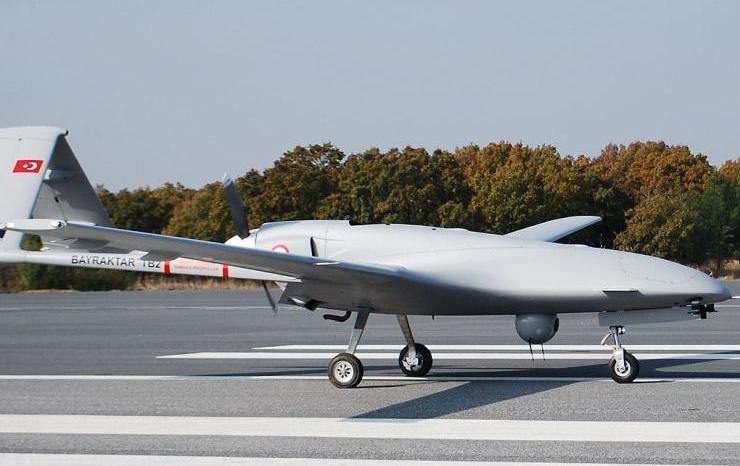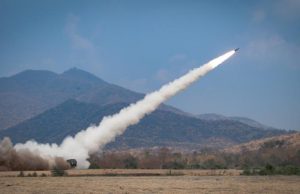Over the last decade, imports of major arms by African states have fallen by half, mainly due to big decreases by Algeria and Morocco, while China has been taking a greater share of the continental market from Russia.
This is according to the Stockholm International Peace Research Institute (SIPRI), which has just released new data on global arms transfers for 2023. The Institute found that African arms imports fell by 52% between 2014–18 and 2019–23, which was mainly due to decreases in the arms imports of the two largest importers in the region, Algeria (–77%) and Morocco (–46%). The main suppliers to Africa in 2019–23 were Russia, accounting for 24% of African imports of major arms, the USA (16%), China (13%) and France (10%).
States in sub-Saharan Africa accounted for 2.2% of all imports of major arms in 2019–23. Their combined arms imports were 9.0% lower than in 2014–18, SIPRI research found. The three largest arms importers in the subregion in 2019–23 were Nigeria (with 16% of sub-Saharan imports), Angola (9.2%) and Senegal (9.2%).
Sub-Saharan Africa receives major arms from a diverse set of suppliers vying to build up influence in the subregion. With a 19% share of subregional arms imports, China narrowly overtook Russia, which had a 17% share, to become the largest supplier of major arms to sub-Saharan Africa in 2019–23.
There were, however, notable decreases in imports of arms from both China (–23%) and Russia (–44 %) between 2014–18 and 2019–23, SIPRI noted. France was the third largest supplier to sub-Saharan Africa in 2019–23 and had an 11% share of subregional arms imports.
Türkiye was the fourth largest supplier, with a share of 6.3%, mostly due to its deliveries of combat helicopters to Nigeria and trainer/combat aircraft and uncrewed aerial vehicles (UAVs) to several states.
Elsewhere in the region, SIPRI found that Egypt was the world’s seventh-largest arms importer in 2019–23. Its imports included more than 20 combat aircraft and a total of 10 major warships aimed at increasing its military reach.
Globally, SIPRI found that states in Europe almost doubled their imports of major arms (+94%) between 2014–18 and 2019–23 due to the Ukraine conflict and regional tensions, with around 55% of arms imports by European states in 2019–23 supplied by the USA, up from 35% in 2014–18. Ukraine emerged as the largest European arms importer in 2019–23 and the fourth largest in the world, after at least 30 states supplied major arms as military aid to Ukraine from February 2022.
“With many high-value arms on order—including nearly 800 combat aircraft and combat helicopters—European arms imports are likely to remain at a high level,” said Pieter Wezeman, Senior Researcher with the SIPRI Arms Transfers Programme. “In the past two years we have also seen much greater demand for air defence systems in Europe, spurred on by Russia’s missile campaign against Ukraine.”
“More than half of arms imports by European states come from the USA,” noted SIPRI Director Dan Smith, “while at the same time, Europe is responsible for about a third of global arms exports, including large volumes going outside the region, reflecting Europe’s strong military–industrial capacity. Many factors shape European NATO states’ decisions to import from the USA, including the goal of maintaining trans-Atlantic relations alongside the more technical, military and cost-related issues. If trans-Atlantic relations change in the coming years, European states’ arms procurement policies may also be modified.”
The USA’s arms exports grew by 17% between 2014–18 and 2019–23, and its share of total global arms exports rose from 34% to 42%. The USA delivered major arms to 107 states in 2019–23, more than it has in any previous five-year period and far more than any other arms exporter. The USA and states in Western Europe together accounted for 72% of all arms exports in 2019–23, compared with 62% in 2014–18.
“The USA has increased its global role as an arms supplier—an important aspect of its foreign policy—exporting more arms to more countries than it has ever done in the past,” said Mathew George, Director of the SIPRI Arms Transfers Programme. “This comes at a time when the USA’s economic and geopolitical dominance is being challenged by emerging powers.”
France’s arms exports increased by 47% between 2014–18 and 2019–23 and for the first time it was the second biggest arms exporter, just ahead of Russia. The largest share of France’s arms exports (42%) went to states in Asia and Oceania, and another 34% went to Middle Eastern states. The largest single recipient of French arms exports was India, which accounted for nearly 30%. The increase in French arms exports was largely due to deliveries of combat aircraft to India, Qatar and Egypt.
“France is using the opportunity of strong global demand to boost its arms industry through exports,” said Katarina Djokic, researcher at SIPRI. “France has been particularly successful in selling its combat aircraft outside Europe.”
Russian arms exports fell by 53% between 2014–18 and 2019–23. The decline has been rapid over the course of the past five years, and while Russia exported major arms to 31 states in 2019, it exported to only 12 in 2023. States in Asia and Oceania received 68% of total Russian arms exports in 2019–23, with India accounting for 34% and China for 21%.
Looking at the other top 10 arms exporters after the USA, France and Russia, two saw increases in exports: Italy (+86%) and South Korea (+12%); while five saw decreases: China (–5.3%), Germany (–14%), the United Kingdom (–14%), Spain (–3.3%) and Israel (–25%).
India has kept its position as the world’s top arms importer, SIPRI data found. Its arms imports increased by 4.7% between 2014–18 and 2019–23. Although Russia remained India’s main arms supplier (accounting for 36% of its arms imports), this was the first five-year period since 1960–64 when deliveries from Russia (or the Soviet Union prior to 1991) made up less than half of India’s arms imports.
Pakistan also significantly increased its arms imports (+43%). Pakistan was the fifth largest arms importer in 2019–23 and China became even more dominant as its main supplier, providing 82% of its arms imports.
Elsewhere in the Asia-Pacific, arms imports by Japan increased by 155% and South Korea’s imports grew by 6.5%. China’s arms imports shrank by 44%, mainly as a result of substituting imported arms—most of which came from Russia—with locally produced systems.
“There is little doubt that the sustained high levels of arms imports by Japan and other US allies and partners in Asia and Oceania are largely driven by one key factor: concern over China’s ambitions,” said Siemon Wezeman, Senior Researcher with the SIPRI Arms Transfers Programme. “The USA, which shares their perception of a Chinese threat, is a growing supplier to the region.”
Thirty percent of international arms transfers went to the Middle East in 2019–23. Three Middle Eastern states were among the top 10 importers in 2019–23: Saudi Arabia, Qatar and Egypt.
Saudi Arabia was the world’s second-largest arms importer in 2019–23, receiving 8.4% of global arms imports in the period. Saudi Arabian arms imports fell by 28% in 2019–23, but this was from a record level in 2014–18. Qatar increased its arms imports almost fourfold (+396%) between 2014–18 and 2019–23, making it the world’s third biggest arms importer in 2019–23.
The majority of arms imports by Middle Eastern states were supplied by the USA (52%), followed by France (12%), Italy (10%) and Germany (7.1%).
“Despite an overall drop in arms imports to the Middle East, they remain high in some states, driven largely by regional conflicts and tensions,” said Zain Hussain, researcher at SIPRI. “Major arms imported in the past 10 years have been used widely in conflicts in the region, including in Gaza, Lebanon and Yemen. Some states in the Gulf region have imported large volumes of arms to use against the Houthis in Yemen and to counter Iranian influence.” (Photo: A Turkish Bayraktar TB2 on the runway. CC BY-SA 4.0/ Bayhaluk)







